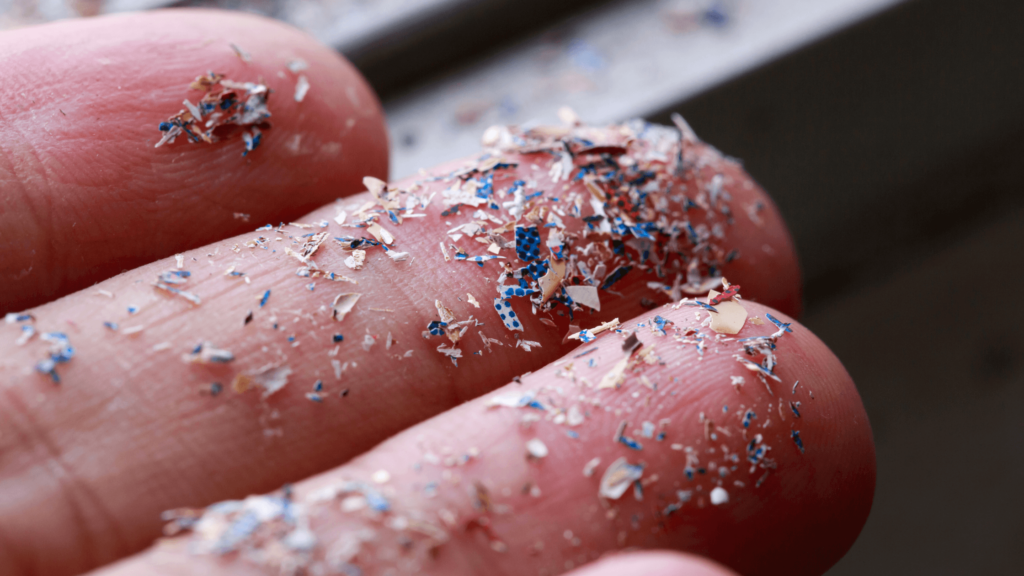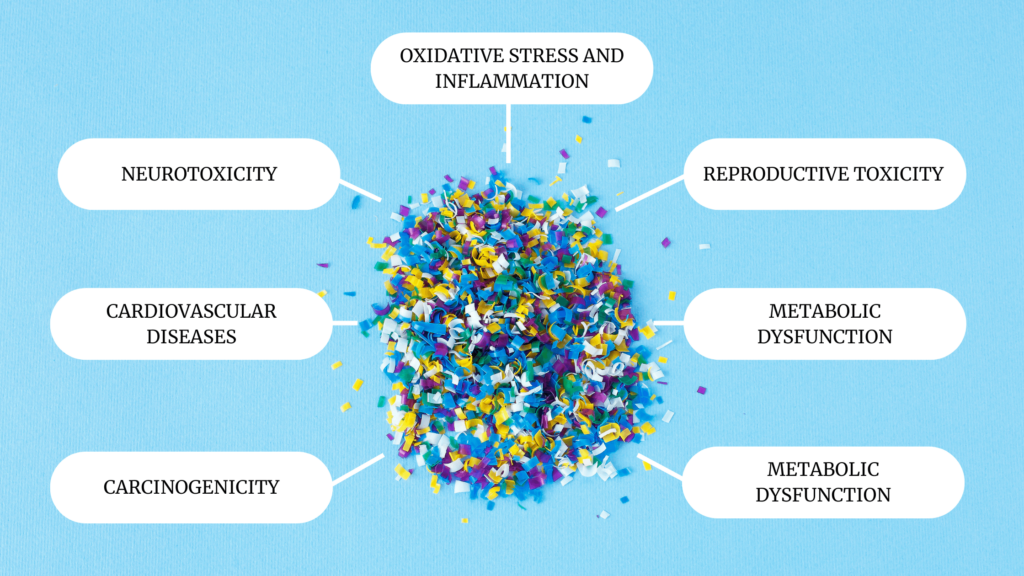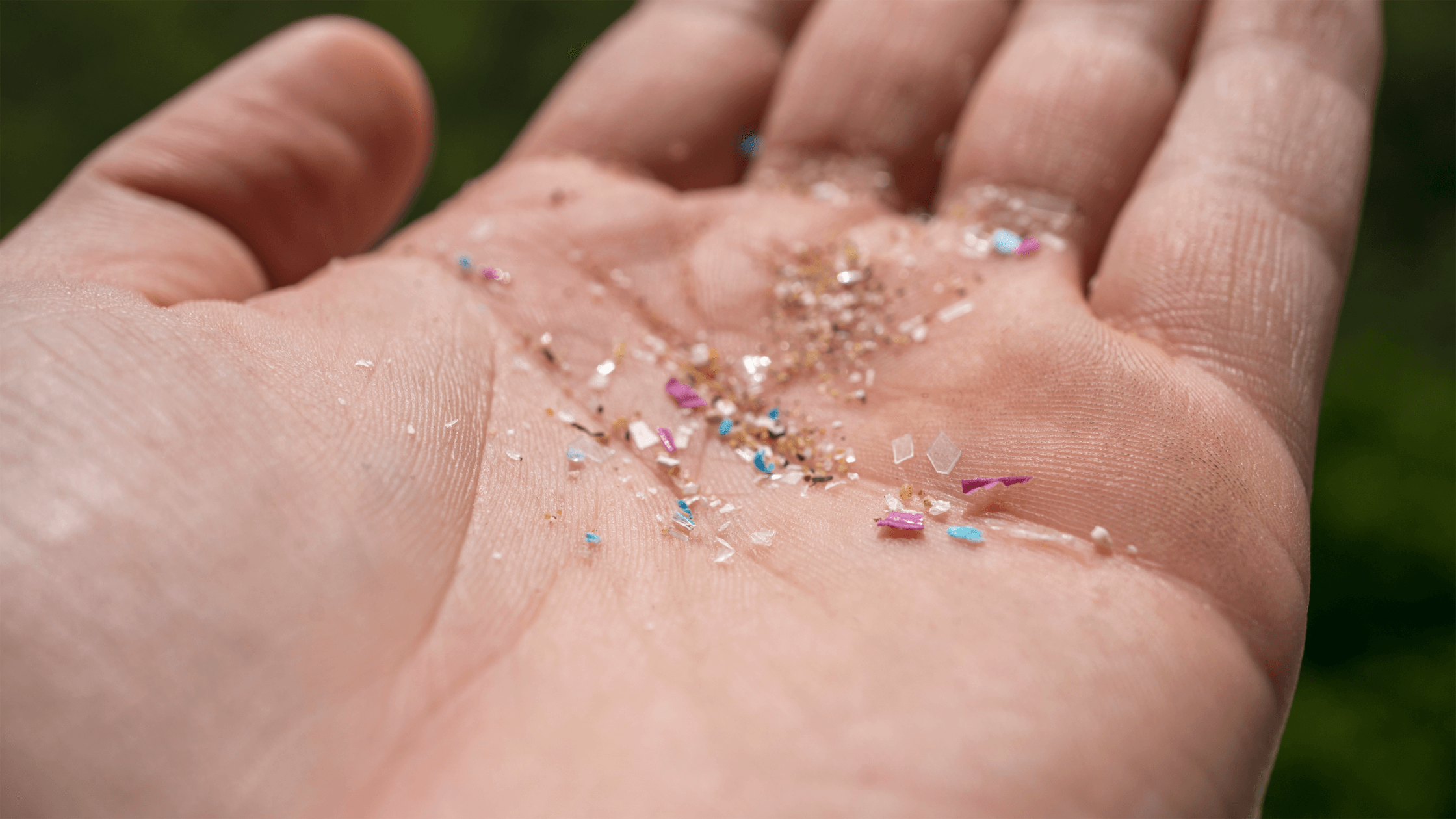A long career in architecture, engineering, or construction means caring for your health. Working out and eating well are great habits, but science shows that single-use plastics—many used on construction sites—are increasingly harmful. These microscopic, invasive particles could impact your heart, lungs, and gut health. While they are unavoidable to some degree, simple swaps like avoiding highly processed foods, switching to filtered tap water, and using specific cookware could reduce your exposure to microplastics and limit harmful health benefits.
What are microplastics?

Microplastics are tiny plastic particles less than 5 millimeters in diameter—so tiny that the naked eye cannot see most. One of the categories of microplastics, “primary” microplastics, are small plastic particles designed for commercial use. They’re often used as microfibers like textiles, clothing, and cosmetics products like exfoliants.
Secondary microplastics result from the breakdown of larger plastics, such as water bottles. This breakdown is caused by environmental exposure, such as ocean waves or the sun’s radiation.
Microplastics come in four forms:
- Microbeads: Non-biodegradable plastic particles less than a millimeter in diameter. They are commonly found in cosmetics.
- Fragments: Small pieces of plastic resulting from larger items littered or dumped. They can be moved by wind and storms and end up in oceans and lakes.
- Microfibers: Microscopic plastic fibers found in building materials like paint and artificial turf.
- Microplastic pellets: Small plastic particles often made from recycled plastic. They can be reused to produce new plastic products but also end up in the environment.
Microplastics are everywhere
Across North America, millions of tons of plastic go unrecycled each year. The construction industry is one of the most significant contributors to global waste, using single-use plastics for things like protection, insulation, and transportation. When this plastic inevitably breaks down into microplastics, it pollutes everything: our water, soil, oceans, and even our air.
This invisible plastic pollution is omnipresent. It’s especially present in indoor air, but it’s also in people’s bloodstreams, a pregnant person’s womb, and breastmilk. Scientists who have sampled fish in the Great Lakes have even found that they have been contaminated with microplastics.
Escaping densely populated areas does not eliminate microplastics. Even more remote areas, like the Canadian Arctic, have been sampled and found to have microplastics in soil, water, and ice.
Why are microplastics a problem?

Microplastics have been shown to impact various body systems, including the heart, gut, respiratory systems, hormones, and more. New research, sampling techniques, and long-term monitoring are advancing to determine the health repercussions of ingesting microplastics.
Heart problems
Microplastics and nanoplastics (MNPs) are emerging as risk factors for cardiovascular diseases. A study published in the New England Journal of Medicine looked at the effect of nanoplastic and microplastic chemicals on the heart, finding them present in areas like the plaque lining arteries. Polyethylene in their plaque was associated with increased heart problems compared to those without any microplastics detected. Other experimental research suggests that MNPs can facilitate “oxidative stress, platelet aggregation, cell senescence, and inflammatory responses in endothelial and immune cells while promoting a range of cardiovascular and metabolic alterations that can lead to disease and premature death.”
Changes in the gut microbiome
When ingested, microplastics can cause microbial dysbiosis and gut inflammation, resulting in systemic inflammation and the circulation of PAMPs (pathogen-associated molecular patterns). This can result in dysbiosis (imbalanced gut microbes) and intestinal damage, leading to various functional changes in the rest of the body.
Microplastics can also cause chemical toxicity, which involves the absorption and accumulation of toxins like polycyclic aromatic hydrocarbons and heavy metals. These substances may enter the body through the gastrointestinal tract, causing abdominal pain, nausea, and vomiting.
Oxidative stress in the airways
Microplastics can affect the respiratory system, potentially causing oxidative stress in the airways and lungs when inhaled. In industries where chemicals and toxins are already present in the air, this can compound an existing problem. Inhalation of microplastics can result in sneezing, coughing, shortness of breath, and inflammation. Due to the blood oxygen concentration, this respiratory irritation can also cause dizziness and fatigue.
Nano-sized plastics have been associated with mitochondrial damage in the body’s respiratory cells. These plastics act as a vehicle for environmental toxins and can be detrimental to lung cells, ultimately increasing the chance of obstructive pulmonary disease.
Hormonal and endocrine disruptions
Microplastics impact the release, production, transport, and elimination of hormones in the body. A buildup of microplastics can lead to endocrine dysfunction by affecting the function of various hormones, including the pituitary, thyroid, adrenals, and gonads. Long-term exposure to plastic particles and associated chemicals has been linked to issues with thyroid function by weakening its driving forces in regulating growth, development, metabolism, and reproduction.
Microplastics could act as a mode of transport for bisphenol A, which, when absorbed by the body, can cause various endocrine diseases. The adverse effects of these systems warrant further research, but the science we have now tends toward significant health issues.
How to reduce your exposure to microplastics
The built environment is no stranger to plastics, from materials and transport to food and beverage containers. Though they are everywhere and in almost anything, there are things you can do to reduce your exposure to microplastics and mitigate harmful health effects.
- Get fresh air when you can. Indoor air has a higher concentration of pollutants than fresh outdoor air. Open a window when it’s warm enough, and run an air purifier when it’s colder.
- Swap to tap water. Instead of bottled water, which can hold roughly 240,000 microplastic particles, switch to filtered tap water. Opt for a water filter with membrane filtration. Also, consider bringing a reusable water bottle to work and skip the plastic bottles.
- Avoid overly processed foods. During production and packaging, microplastics often end up in processed food. Minimally processed, fresh food contains far fewer microplastics. Consume foods in their purest form.
- Eliminate single-use plastic. Avoid single-use plastics as much as possible. Also, aim for shorter dishwasher cycles with fewer plastic dishware in the cycle.
- Don’t cook or store your food in plastic. The heat can cause plastic particles from your cookware to leach into your food. If using plastic containers to store food, ensure it’s cooled before putting it into the container. Consider glass or stainless steel cookware and storage as an alternative.
- Be picky with cleaning products. Opt for cleaning products that don’t come in plastic containers. Better yet, make DIY, non-toxic cleaning products that skip anything harmful.
- Opt for wool and linen. Clothing can shed microplastics, but materials like linen and wool are generally far less impacted. Also, avoiding synthetic materials in rugs and furniture will reduce your exposure to microplastics.
Lastly, choose polyhydroxyalkanoate (PHA) material for your food packaging. PHA bioplastics are a sustainable alternative to single-use plastic and achieve an 87% yield using optimized fermentation processes. They are also low-cost to produce, and their biodegradability and biocompatibility make them ideal for avoiding microplastics and being more eco-friendly.
Bottom line
Microplastics are unavoidable for the most part, and exposure could pose many risks to your health—the heart, gut, and respiratory system take a hit with long-term exposure to microplastics, so make a conscious effort to reduce their presence in your life and mitigate their adverse health effects. Simple swaps like investing in a water filter, switching out plastic storage containers for glass, and choosing low-toxic textiles like linen and wool can make a big difference in your long-term health.
Like this and want more? Subscribe to our weekly newsletter and follow us on social media for the best health and wellness tips for professionals in the built environment.




1 comment